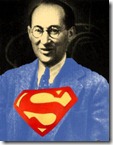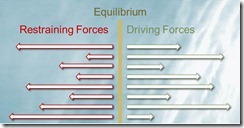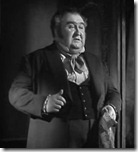By Sean McManus, co-author of The Customer Service Pocketbook
 Just before Christmas, news came out that Google has updated the way its search engine works, so that it discriminates against companies that offer bad customer service.
Just before Christmas, news came out that Google has updated the way its search engine works, so that it discriminates against companies that offer bad customer service.
Google counts a link to a website as being a vote in favour of it, and uses those votes (among other things) to decide how highly websites rank in its search results. The problem was that if the links appeared with complaints about the company, perhaps in a consumer rights forum, Google still gave companies credit for that link. Now that’s all changed, and Google says it now penalises companies apparently offering poor service.
The change responds to a claim in a US newspaper that one company deliberately offered bad customer service, just so that people would gripe about it online and give it lots of links that would boost its search engine ranking.
For online businesses, this means it’s never been more important to offer good service. If they don’t, they risk sliding down the search engine rankings, which can have a big impact on new customer acquisition and sales volume.
Google has always been committed to giving people the best web pages for their search queries, but this represents a subtle change. It means Google is now prioritising the reputation of the website operator too, including factors that are independent of the website itself.
 Google holds a huge amount of data about customer behaviour that could also be factored in. Let’s not forget that Google knows how often people search for your company name together with ‘complaints department’.
Google holds a huge amount of data about customer behaviour that could also be factored in. Let’s not forget that Google knows how often people search for your company name together with ‘complaints department’.
It can even benchmark these figures across different companies, industries and countries, to identify companies that have significantly more complaints than their rivals.
.
.
If Google is committed to good customer service, you should be too
.
Find out how to improve customer service across your organisation in …
 Never has there been a time when retaining your customers has been more important. The Customer Service Pocketbook, by Tony Newby and Sean McManus will give you lots of hints and tips about communicating with your customers, dealing with complaints and monitoring your performance.
Never has there been a time when retaining your customers has been more important. The Customer Service Pocketbook, by Tony Newby and Sean McManus will give you lots of hints and tips about communicating with your customers, dealing with complaints and monitoring your performance.






 The Managing Change Pocketbook
The Managing Change Pocketbook



 How much did you achieve in 2010? Seth Godin, in
How much did you achieve in 2010? Seth Godin, in  If you are in the business of serving people or creating products for them, this is what you have chosen, so, resolve to put up or shut up. Treat every customer as you would wish to be treated when you are at you most demanding and unreasonable.
If you are in the business of serving people or creating products for them, this is what you have chosen, so, resolve to put up or shut up. Treat every customer as you would wish to be treated when you are at you most demanding and unreasonable.
 This image of Santa may seem as old as the hills, but it is new enough to know the name of the man who first created it, and why.
This image of Santa may seem as old as the hills, but it is new enough to know the name of the man who first created it, and why. So don’t just thank/blame Drake, Raleigh and their kin for tobacco, chilli, chocolate and spuds. They get the credit for a whole industry too. In this case, it was navigator William Strickland who is thought to have imported the first turkeys to Bristol in 1526. His family’s arms bear (in the words of the Royal College of Arms) a “turkey-cock in his pride proper”.
So don’t just thank/blame Drake, Raleigh and their kin for tobacco, chilli, chocolate and spuds. They get the credit for a whole industry too. In this case, it was navigator William Strickland who is thought to have imported the first turkeys to Bristol in 1526. His family’s arms bear (in the words of the Royal College of Arms) a “turkey-cock in his pride proper”. Sir Henry Cole founded the Victoria and Albert Museum (V&A) in London and wanted to let everyone he knew know about his desire to help the poor at Christmas. Not having email, nor the time to write hundreds of letters, he resorted to asking an artist to design a card he could put into the newly founded postal system that he had championed.
Sir Henry Cole founded the Victoria and Albert Museum (V&A) in London and wanted to let everyone he knew know about his desire to help the poor at Christmas. Not having email, nor the time to write hundreds of letters, he resorted to asking an artist to design a card he could put into the newly founded postal system that he had championed.




 When you slow down, you transform not just what you achieve and how you feel, but the way that others perceive you. Cultivate slow in the right areas of your manner, and you will also boost your personal impact, as a bonus. Learn more in
When you slow down, you transform not just what you achieve and how you feel, but the way that others perceive you. Cultivate slow in the right areas of your manner, and you will also boost your personal impact, as a bonus. Learn more in